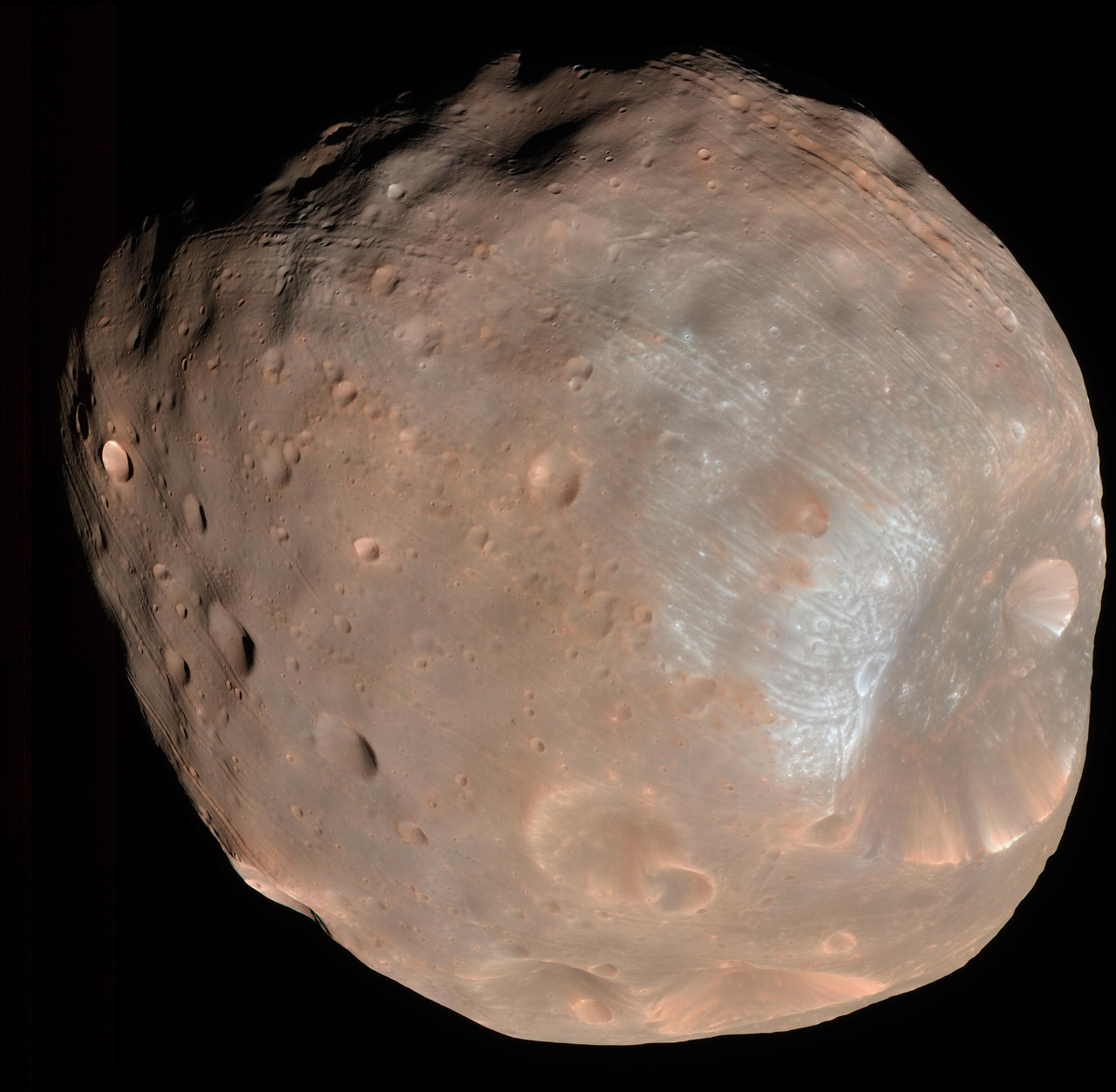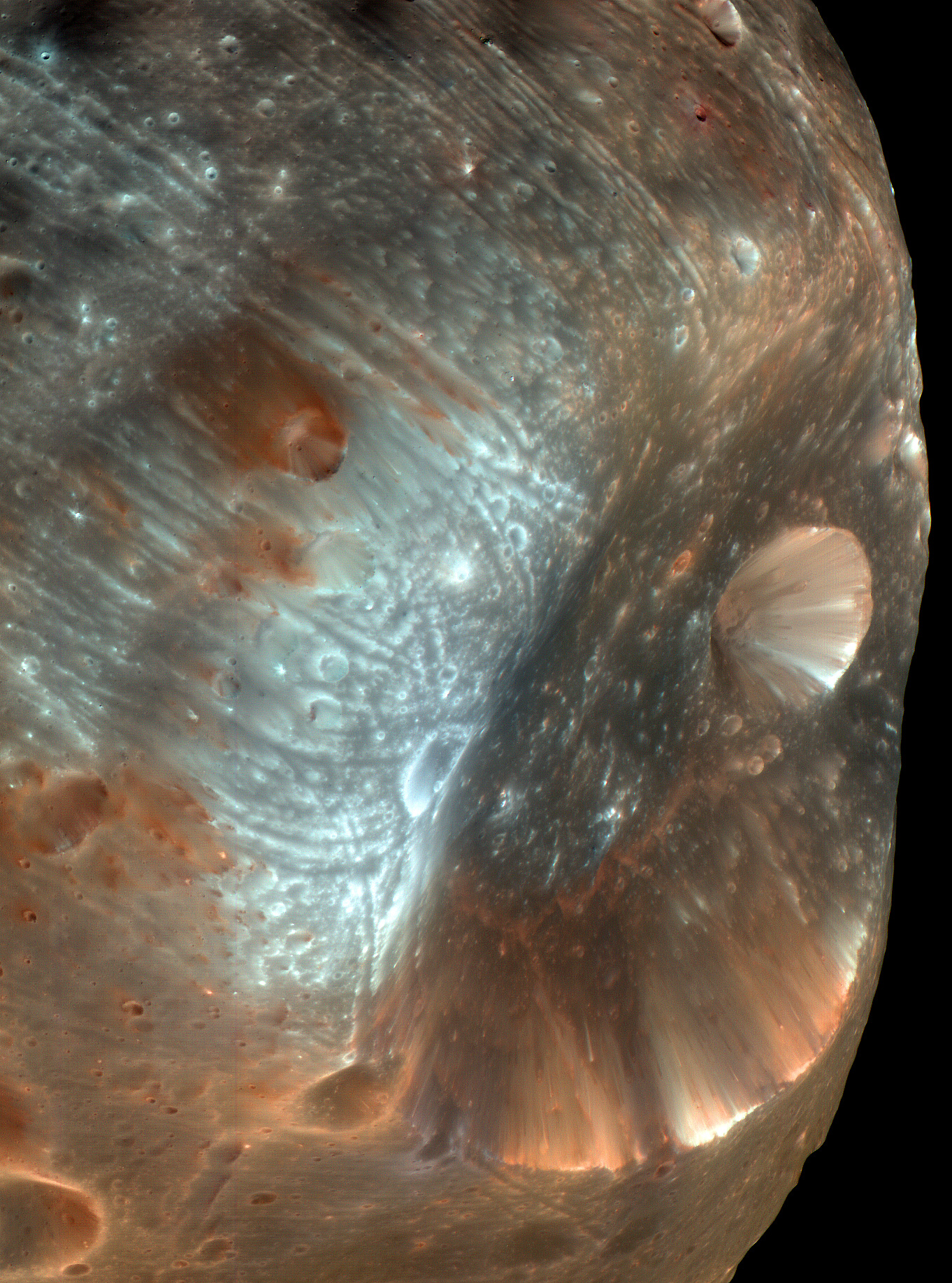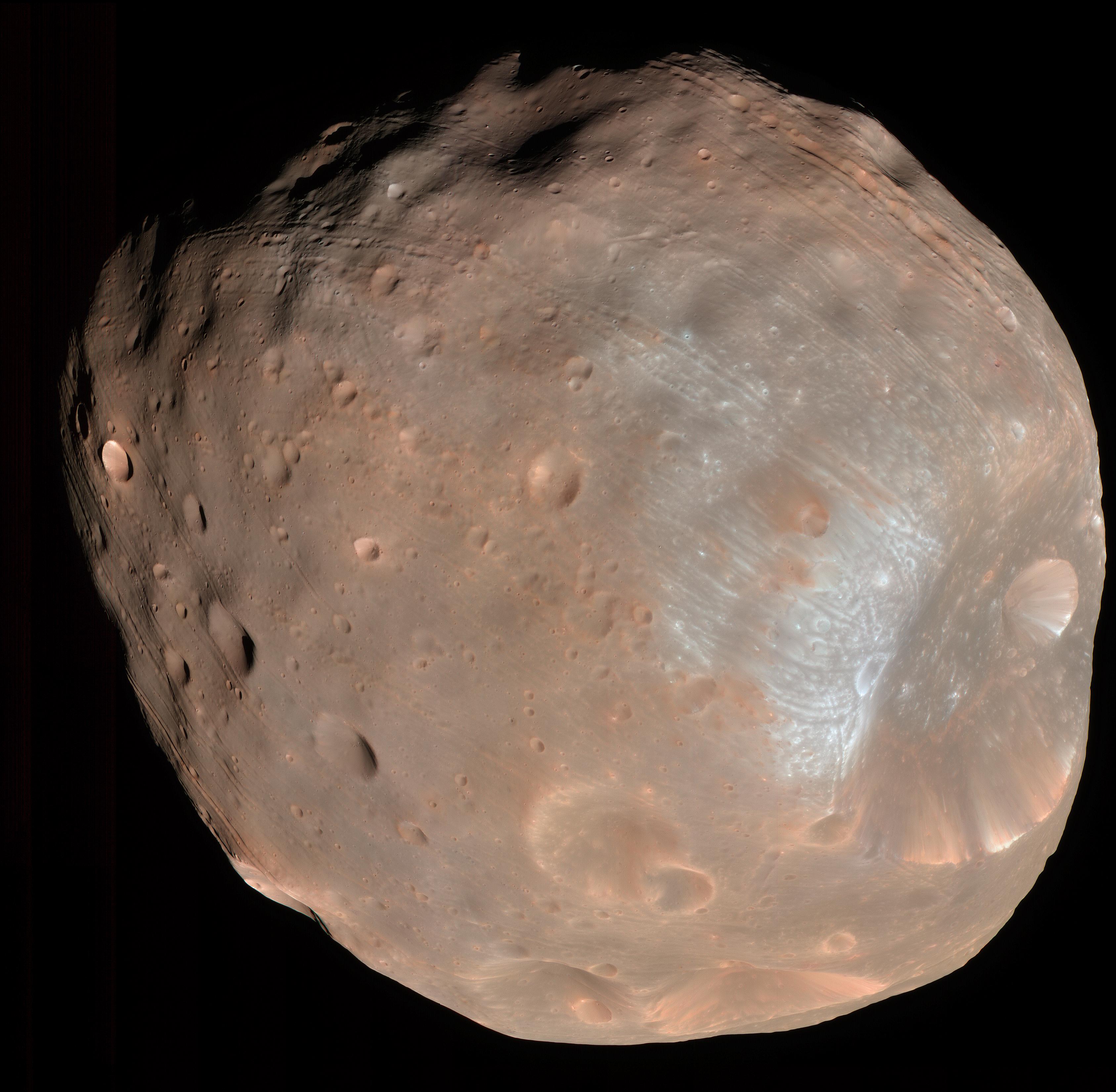Martian Moon Phobos

| Credit | NASA/JPL-Caltech/University of Arizona |
|---|---|
| Historical Date | March 23, 2008 |
| PIA Number | PIA10368 |
| Language |
|
Mars' largest moon Phobos as seen by Mars Reconnaissance Orbiter in 2008.
The image was taken from a distance of about 4,200 miles (about 6,800 kilometers). It is presented in color by combining data from the camera's blue-green, red, and near-infrared channels.

The illuminated part of Phobos seen in the images is about 21 kilometers (13 miles) across. The most prominent feature in the images is the large crater Stickney in the lower right. With a diameter of 5.6 miles (9 kilometers), it is the largest feature on Phobos.
The color data accentuate details not apparent in black-and-white images. For example, materials near the rim of Stickney appear bluer than the rest of Phobos. Based on analogy with materials on our own moon, this could mean this surface is fresher, and therefore younger, than other parts of Phobos.
A series of troughs and crater chains is obvious on other parts of the moon. Although many appear radial to Stickney in this image, recent studies from the European Space Agency's Mars Express orbiter indicate that they are not related to Stickney. Instead, they may have formed when material ejected from impacts on Mars later collided with Phobos. The lineated textures on the walls of Stickney and other large craters are landslides formed from materials falling into the crater interiors in the weak Phobos gravity (less than one one-thousandth of the gravity on Earth).
In the full-resolution version of this image, a pixel encompasses 22 feet (6.8 meters), providing a resolution (smallest visible feature) of about 65 feet (20 meters).

